The Book on PieEverything You Need to Know to Bake Perfect Pies
Look no further than The Book on Pie for the only book on pie you’ll ever want or need.
Erin Jeanne McDowell, New York Times contributing baker extraordinaire and top food stylist, wrote the book on pie, a comprehensive handbook that distills all you’ll ever need to know for making perfect pies. The Book on Pie starts with the basics, including ways to mix pie dough for extra flaky crusts, storage and freezing, recipe size conversions, and expert tips for decorating and styling, before diving into the recipes for all the different kinds of pies: fruit, custard, cream, chiffon, cold set, savory, and mini. Find everything from classics like Apple Pie and Pumpkin Pie, to more inspired recipes like Birthday-Cake Pie and Caramel Pork Pie with Chile and Scallions.
Erin also suggests recommended pie doughs and toppings with each recipe for infinitely customizable pies: Mix and match Pumpkin Spice Pie Dough and Dark Chocolate Drippy Glaze with the Pumpkin Pie, or sub in the Chive Compound-Butter Crust for the Croque Madame Pielets . . . the possibilities are endless. With helpful tips, photographic guides, and inspirations—pie-deas—it’s almost like having Erin in the kitchen baking pies with you.
ERIN JEANNE MCDOWELL is an author, recipe developer, and award-winning food stylist with specialized focus in baking. Her first book, The Fearless Baker, was named one of the Best Baking Books of 2017 by The New York Times. She’s a regular contributor to New York Times Cooking, Food52 (where she also serves as Baking Consultant at Large), and PureWow. She hosts weekly baking classes on Food Network Kitchen and the series “Bake It Up a Notch” for Food52. Erin has been featured in The New Yorker, New York Magazine, Food and Wine Magazine, Food Network Magazine, and Rachel Ray Magazine. Her work has appeared in The New York Times, The Washington Post, Better Homes and Gardens Magazine, Fine Cooking Magazine, Bake From Scratch Magazine, and Sift Magazine. She lives and works in North Bergen, New Jersey.
Erin Jeanne McDowell
To say that Erin Jeanne McDowell is enthusiastic about pie would be a huge understatement. Something along the lines of ‘fish like water’. This enthusiasm is contagious. After talking with her one has to not only fight an urge to go off and bake a pie, but also to stop themselves researching the origins of said pie you have just baked. But if you are not able to resist, so what, you now have pie! We were recently fortunate enough to have a chat with Erin Jeanne McDowell about pie and her new book the apply named The Book on Pie
Booksaboutfood.com(BAF): I’ve got to ask you why pie?
Erin Jeanne McDowell: Pie is very nostalgic for me. I have a lot of memories of my family eating and enjoying pie, and then eventually making pies together. We would sometimes drive several hours out of our way to snag the perfect slice on a road trip. And in particular, I started baking pies with my grandma Jean when I was about 14 years old. And it became a bit of a tradition for us to bake when we spent the day together, and we also started quickly taking on the tradition of baking all the pies for my family’s Thanksgiving every year. And I have quite a large family. So we would make five or six pies together the day before Thanksgiving. It was really one of my favorite holiday traditions, and for me, pie is incredibly adaptable. And if it has a filling and a crust, to me it’s a pie. And that means that there’s a lot of possibilities, or in the book I say pie-ssibilities, because there’s many different things that you can do with it
BAF: People say that we’re afraid to make a good filling, I can’t make a good crust. How do you do that?
Erin Jeanne McDowell: Yeah, I think my biggest advice to people is that a lot of baking really is muscle memory. So as much as you can struggle making something like a pie one time, sometimes people say to me, “My pie was so bad. The last time I made it, and I want it to be really good for this Thanksgiving.” And I’ll say, “Well, when was the last time you made it?” And they say last Thanksgiving. And it’s just like, I get that because not only do you not remember the details of maybe what went wrong, but your hands don’t either. And the professional bakers that you see and people who love to bake at home, they have that muscle memory in their hands. And everybody who bakes or cooks at home is capable of getting that. That’s why every time we make something, it gets a little bit better and it also gets better the less we have to refer to a recipe and the more we can kind of trust ourselves.
So I generally give people advice to just really always with baking recipes, make sure you read the full recipe all the way through. And I really try to write my recipe methods in a way that I’m really right there with you. I even include in my recipe methods sometimes, it’s going to look weird for about a minute. Don’t freak out. As if I was talking to you because when I made it and it looked weird, I thought, Oh gosh, did I ruin it? What’s going on? So if I’m thinking that, then probably somebody at home is thinking that too. So I really try to write the methods in a way that will give people the best chance of success by not only telling them what to do, but why they’re doing it, and what will happen if they skip that step as well.
That’s the other thing I hate when recipes say things like don’t over mix. But why? I mean, I get it, don’t mix too much, but if people understand that if they over mix, they’re going to get a flat tough cake instead of a light fluffy one, it might change their opinion rather than just it being this ominous general instruction of do not over mix.
BAF: Well that’s what I was going to ask you. You self-sabotage sometimes just for the sake of learning. Say, okay, so this is what happens. And maybe this is how you can save it.
Erin Jeanne McDowell: Yeah, absolutely. That’s something I try to do in my video series, which is called Bake It Up a Notch (Food52.com). We show mistakes as well as the correct way of doing it, because I think that we will all learn a lot from the mistakes. And also sometimes people don’t know what they’ve done wrong, but when I can show them what the mistake looks like, then they say, “Oh, that was my problem.” That was the thing that I wasn’t doing. So a true kind of light bulb moment of sorts with kind of getting, not only the method right, but understanding where it could go wrong.
BAF: You’ve got some very interesting and eclectic ideas. Where do they come from?
Erin Jeanne McDowell: A lot of my recipes are inspired by people that I know and either something that I think they would like or a specific memory, in the book, we have a shrimp boil pie that was inspired by a crawfish boil dinner I had at my friend Rob’s house in the Hudson Valley. And I always think of that day of sitting among the apple trees very fondly. And I was like, “I want to make that into a pie. That could be a pie.” So I like to think of individual people a lot. They inspire me, my family, my friends, random people I’ve never met will sometimes send me messages saying, “What about a plum pie with a cinnamon streusel?” And the next thing you know, you’re like, “Yeah, what about a plum pie with a cinnamon streusel?” And so a lot of ideas kind of come from all over and then because I’m a very visual person and I am a food stylist. Sometimes I do think of appearance things, right? I like to almost stretch the bounds of what’s possible. So one of the examples of that in the book was I wanted to make make custard pies, which is a baked custard, like a pecan pie or a pumpkin pie, but then why couldn’t other custards be baked into a pie, like maybe a clafoutis, which is typically baked without a crust, or a soufflé. Why couldn’t that be baked inside a pie crust?.. And they all can! I have a soufflé pie in the book where I make little individual pielettes and the souffle kind of comes over and it’s the filling of the pie, and you serve it warm and it’s delicious. Similarly, I tried to take ingredients and things that you might not normally think of as being a pairing with pie, like watermelon, and trying to find a way that I could make a watermelon pie.
And the watermelon pie in the book is… I grew up, my parents grow a lot of their own fruits and vegetables, and they grow wonderful melons every year. And I wanted to try to capture that because they always have so much, I was like, “What’s something that you could do when you have a lot of a given fruit?” You make it into a pie. But you can’t do that with a watermelon. But I took the inspiration from Southern style jello pies, which literally just put jello inside of a crumb crust.
And I know that doesn’t sound super appetizing, but it’s something that I grew up eating and I thought then maybe I could make one that does appeal to people. If I don’t call it jello pie and it doesn’t have bright red strawberry jello in it, maybe it’ll be more appealing. So the watermelon pie is a gelatin set filling that’s made with fresh watermelon juice and lime juice, so it’s kind of somewhere between watermelon and limeade and it is so delicious and so refreshing, and it’s a really easy, fun pie to make and has this naturally really vibrant pink color, which is very cool too.
BAF: You’ve got such a broad/eclectic selection of pies. Do you have a definition of what a pie is?
Erin Jeanne McDowell: To me, a pie is just a crust and a filling. So whatever that entails, it can be so many things, and when you take it by that definition, then suddenly it doesn’t have to be baked in a pie pan. I baked pies and skillets in spring form pans in 9×13 pans, you can really bake them in any shape and size that you want. And like I said, they have a lot of adaptability seasonality wise too, because people think of them sometimes for fall and the winter holidays, but also they think of them in the summer. And that’s because really you can find a pie to make year round based on what is good and what’s available right now. I also believe that savory pies, in the United States at least, don’t get enough attention, because in the United States, we think of pie as being predominantly a dessert. But in other countries like Australia, when you think of pie, it’s predominantly a savory item.
I just love savory pies, and most of the savory pies in the book are more of an American interpretation. I did do a beef and mushroom style pie, that’s a very English inspired, savory pie. But most of them are I guess I shouldn’t say there’s a lot of inspiration from other cultures, but they’re not necessarily done in the style of traditional Australian or English meat pies. They’re more of my own perspective on savory pies, but there’s a whole chapter of those too.
BAF: Okay. I was going to pose a question by using the phrase, when did you have your e-pie-phany?
Erin Jeanne McDowell: Yes! I love a good pie pun. They’re all throughout the book. I have a bunch of them.
BAF: We talked about the intimidation factor. So what advice do you have for the novice coming into it?
Erin Jeanne McDowell: Yeah, one of the biggest things with pie is to keep everything really cold, and people underestimate what I mean by that a lot. They’ll keep the ingredients cold beforehand. They’ll chill the dough after mixing, but then they never put it back in the fridge again. So in the book, I talk about all the different stages that you can chill your dough. I have a lot of instructions also, for side-by-side comparisons, because again, I do think that it’s really difficult to know sometimes if your dough is the right kind of hydration, so let’s show you one that’s too dry and one that’s too wet with the right one in the middle so that you can almost hold your dough up and see which one is right. I also think that I don’t necessarily think that pie is as hard as people really think it is, but it requires a lot more patience than most people have in the kitchen.
There aren’t a lot of steps in terms of all the work you’re going to have to put into it, but there’s a lot of time that it’s going to have to be kind of waiting for you where the filling has to cool or the dough has to chill and all of those things. So I always say before you bake your very first pie, if that’s your first time, just like really plan on it being an enjoyable day that you’re spending in the kitchen, and don’t rush it, just take your time. And the more you take your time with pie, the better your results are going to be.
BAF: Now you’ve written one book previously, and you’re clearly very enthusiastic about pie, have lots of knowledge. How did you manage to compress everything into this new book? Was this a difficult thing to, I wouldn’t say difficult to write, but maybe difficult to edit it down?
Erin Jeanne McDowell: It’s actually, this felt like such an opportunity for me because I actually did discuss pies in one chapter of my first book. And that felt impossible, because I love pie so much. And I had so much to say, it was one of the first chapters of my first book that I wrote because it was coming the easiest to me. And I mean, gosh, it was supposed to be a chapter of a book, and I believe that chapter was 300 pages long, not even including any recipes. I just started writing. And it was just like all of these things that I had to say about it came out. And so with this book, it didn’t really feel like I had to condense it at all. It felt like, “Oh my gosh, I have this opportunity to really say everything that I think is important.”
Now that said, I’m clearly showing what kind of author I am with these kinds of confessions. But my manuscript was way too long, when I turned it in for the book on pie. And we did have to make to me what felt like pretty deep cuts, but I was really lucky that my publisher agreed with me that those cuts shouldn’t come from kind of the method and the creative kind of the front matter of the book, the stuff that I really wanted and had a lot to say about. They agreed that if we’re going to cut something, we just need to cut some recipes. So what we ended up doing was we cut almost an entire chapter, and I made it into a little separate ebook that we were giving away as kind of a pre-order incentive at the beginning and people loved the ebook. And so now I’m trying to figure out a way to continue, to have it available to people, because that chapter that was deleted was the mini pie chapter, and there are a lot of fun things in that chapter, for sure.
BAF: You touched on the regionality of this country. So it must be fun to travel around. Do you still find new discoveries? Are you still discovering new hidden little gems or regional pies?
Erin Jeanne McDowell: Yeah, absolutely. Actually, one of my favorite places to score a slice of pie is a very off the beaten path, cattle auction barn in the town of Overbrook, Kansas, where my grandma lived. And the only reason that that town is still a town is because of this cattle auction barn kind of keeping it afloat. And on Mondays when it’s auction day, every other business in town is closed because just about everybody goes there.
So they sell pies and a simple menu in a little restaurant off to the side of the auction house thing. And there are places like that all over the country. I mean, there’s so many that I haven’t found where just for whatever reason, whatever that I just explained, the whole reason why they’re selling pie on Mondays in the middle of nowhere in Kansas, but there are situations like that all over. Whether it’s a bake sale that you stumble upon, whether it’s kind of an annual pie, whatever, what have you, I mean, I still sort of have dreams of retiring and just baking pies, for one day a week to sell on the side of the road somewhere.
That sounds like a pretty great life to me. So I’m missing traveling very much right now, but certainly I think anyone who writes about food in any capacity takes a huge amount of inspiration from any time they travel, whether it’s actually experiencing whether I have a literal pie that I loved and that I must recreate, or whether I have something else that sparks an idea for a pie or some other kind of baked good. Travel is always an incredible source of inspiration for sure. And something we’re all missing in this year of 2020.
BAF: Well, can I ask how far would you say is the furthest you’ve gone to get a pie?
Erin Jeanne McDowell: Oh man. I mean, I’ve planned whole trips around going to try a pie somewhere. So I guess eight hours or more, if you count that and then I’ve stayed and did other things in that place, but I’m not afraid to travel for a great slice.
BAF: The real reason for the trip was the pie.
Erin Jeanne McDowell: Yeah, I was like, “I have to try that bakery. So what else should we do while we’re in the city?”
BAF: What are you up to next?
Erin Jeanne McDowell: Oh man. My dad heard me answer this question on a TV interview once, and he was really upset with the way I answered it because I basically said I don’t know. And he was like, “You never can say that, you always have to say something.” Well, my number one goal is I love teaching people how to bake and helping people learn to bake better. So my number one goal is to continue teaching, to continue producing videos that are instructional, and also to produce another book. I do have an idea for my next book, and it’s one I’m, I can’t believe I’m saying this, but I’m equally as passionate about this idea as pie, and I’m very passionate about pie.
So I’m really, really eager to kind of get started. I think my husband is hoping I’ll take a little bit more of a break before I get started, but we’ll see. I just can’t resist. The process of making a book is something I would like to do for the rest of my life. And I’ve worked on books for lots of other authors as a food stylist, as a recipe tester, as a recipe developer. I worked for a publishing house for a number of years that did cookbooks and I just love the whole process of it. So I’m eager. And if I’m lucky, I will spend the rest of my life making books like this one for whoever’s going to read them.





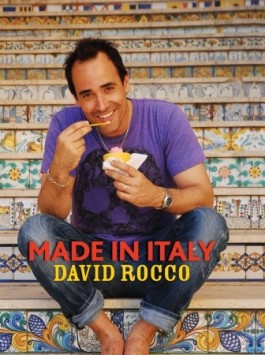

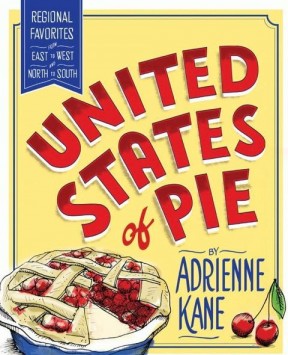
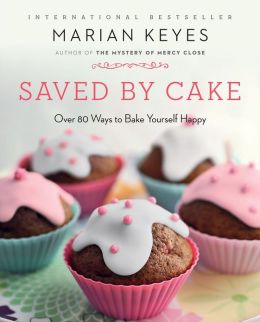
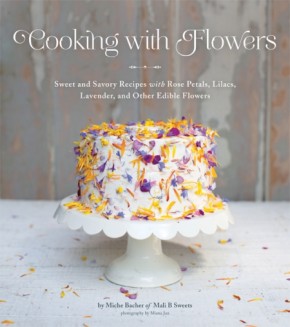
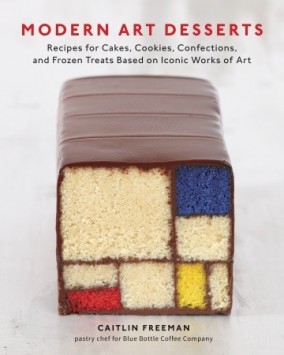
Leave a Reply